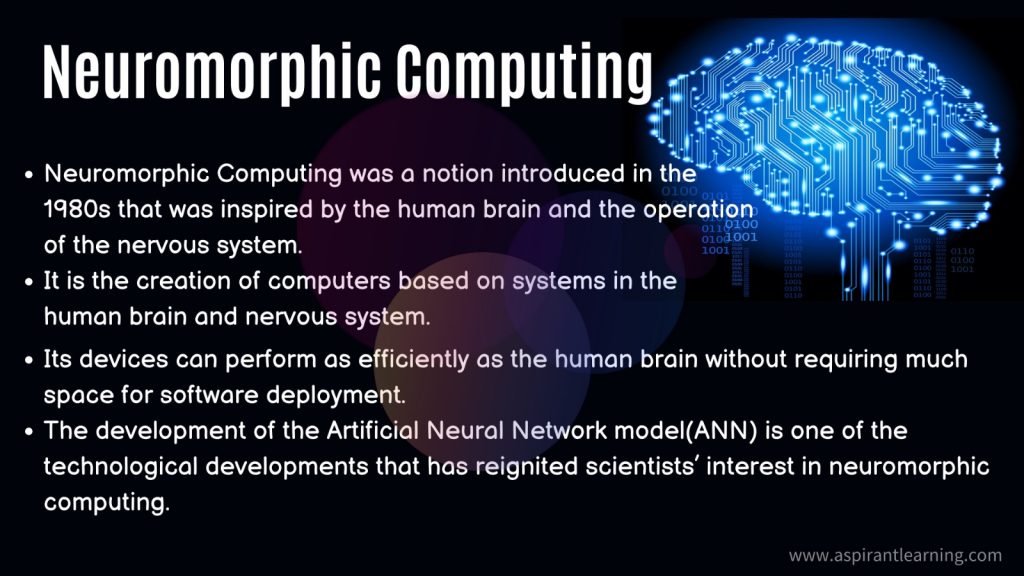News Highlight
Scientists at Johns Hopkins University have presented a strategy for ‘organoid intelligence,’ which aims to create bio-computers.
Key Takeaway
- Bio-computers are systems in which lab-grown brain cultures are linked to real-world sensors and input/output devices.
- The technology is expected to harness the brain’s processing power and help scientists comprehend the biological foundation of human cognition, learning, and numerous neurological illnesses.
Bio-computers
- About
- The JHU researchers plan to develop “bio-computers” by combining brain organoids with modern computing technology.
- They intend to combine organoids and machine learning by growing the organoids inside flexible structures attached to many electrodes.
- Additionally, these structures will be capable of recording neuronal firing patterns.
- As well as delivering electrical stimulation to simulate sensory sensations.
- Machine-learning techniques will analyse the neurons’ response patterns and their impact on human behaviour or biology.
- Scientists recently succeeded in growing human neurons on top of a microelectrode array that could record and stimulate these neurons.
- They could teach the neurons to develop a pattern of electrical activity.
- It would be generated if the neurons played table tennis using the sensors’ positive or negative electric feedback.
Organoid Intelligence
- Premise of technology
- Historically, researchers have studied numerous human neurological problems using rat brains.
- While rats provide a simpler and more accessible system for studying the brain, many structural and functional distinctions exist.
- As well as noticeable variations in rodent and human cognitive capacities.
- Scientists are creating 3D brain tissue cultures in the lab, also known as brain organoids, to design more applicable human systems.
- In addition, these “mini-brains” are made from human stem cells and mimic many anatomical and functional aspects of a developing human brain.
- They are now using them to examine human brain development and test medications to see how people react.
- Unfortunately, the human brain requires various sensory inputs to evolve into the complex organ it is.
- Furthermore, lab-created brain organoids aren’t sophisticated enough.
- The organoids now lack blood circulation, limiting their ability to expand.
Uses of technology
- While human brains are slower than computers at simple mathematics, they outperform machines at complicated information processing.
- Brain organoids can also be created using stem cells from people suffering from neurodegenerative diseases or cognitive problems.
- The molecular basis of human cognition, learning, and memory can be revealed by comparing data on brain anatomy, connections, and signalling between ‘healthy’ and ‘patient-derived’ organoids.
- They may also aid in the pathophysiology and development of drugs for catastrophic neurodevelopmental and degenerative disorders like Parkinson’s disease and microcephaly.
Ways to study the human brain
- Scientists recently implanted human brain organoid cultures into rat brains, where they developed connections with the rat brain, providing circulating blood.
- Because the organoids had been implanted in the visual system when the researchers showed the experimental rats a light flash.
- The human neurons were also triggered, demonstrating that the human brain organoids were functionally active.
- Scientists have hailed such a system to study brain diseases in a human setting.
- However, human brain organoids remain nested in the rat-brain milieu.
- Furthermore, it includes non-neuronal cells that are vital in several neurological diseases.

Pic Courtesy: Industry Tap
Content Source: The Hindu



